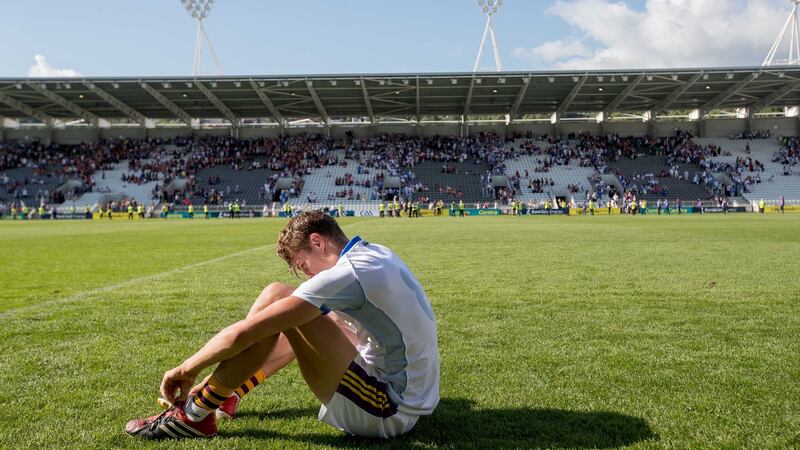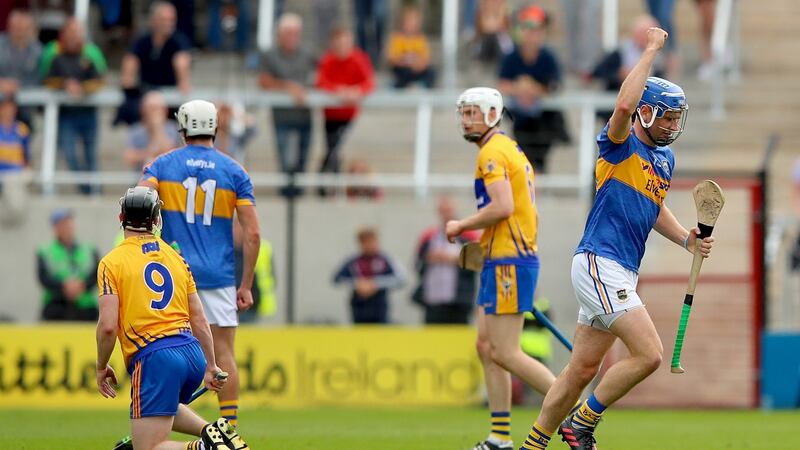In Irish life, certain phenomena clang off each other with such familiarity as to be memory aids. When the radio shows start doing their annual features on the price of uniforms and schoolbooks, you know it must be time for the GAA championships to get down to serious business. The last week of July narrows the focus. Four teams left in hurling, three games to pick them apart.
Tipperary and Galway can’t have relished the draw this morning - they’d have fancied anything but facing each other. Cork and Waterford will both be delighted in their own specific way - Waterford possibly more so, you suspect. But before we tip headlong into the rest of the summer, a word for the two sides who got lost overboard across the weekend.
For the second summer in a row, Wexford and Clare are the teams leaving us at this point in the championship. Everything changed and nothing changed for them in 2017. Job one for 2018 is avoiding this feeling after the quarter-final stage for the third year in a row.
Wexford
2017: All-Ireland quarter-finals; 1st in Division 1B
2016: All-Ireland quarter-finals; 3rd in Division 1B
When the tide feels like it’s rising, people’s memories can be overwhelmed pretty quickly in the wash. In the giddiness surrounding Wexford’s summer, it was generally forgotten that they were also in All-Ireland quarter-finals in 2014 and 2016. And that they had to take on Waterford in the equivalent fixture last year without seven of the team who played in Páirc Uí Chaoimh yesterday. For sure, 2017 has been a step forward but the giant leap still has to be taken.
The year brought two wins over Kilkenny, the first time that has happened since 1988. It brought a first Leinster final since 2008, a first promotion to the top division of the league since restructuring in 2011 and the possibility of a first All Star since Damien Fitzhenry in 2004. It brought a record crowd to Croke Park on Leinster final day and a never-to-be-forgotten night in Wexford Park in early June. These are not unimportant landmarks.
On the personnel front, Davy Fitzgerald has reintegrated Jack Guiney to reasonable effect and deployed Shaun Murphy in an imaginative way at sweeper, freeing the likes of Diarmuid O'Keeffe and Matthew O'Hanlon to burst forward from defence. The loss of Damien Reck and particularly Liam Óg McGovern to cruel injuries robbed Fitzgerald of critical thrust and energy and he can count himself unfortunate on both counts.
What happens from here will be fascinating. If the championship is restructured as planned, Wexford could feasibly be swallowed up by having to play Kilkenny, Galway and a possibly revitalised Dublin next summer. An obvious problem is that their forwards just don't score enough - between them, Jack Guiney, Conor McDonald and Paul Morris scored 0-11 from play over three games. Fixing that needs to be Fitzgerald's first move over the winter.
Clare
2017: All-Ireland quarter-finals; 5th in Division 1A
2016: All-Ireland quarter-finals; National League champions

When it comes to player moves against management, ruthlessness is double-edged. The certainty with which the heave is executed will always be matched by the firm swish of dismissal from the general public if results don't bring justification the following year. Clare are basically no better now than they were under Davy Fitz. That is ostensibly the rod the players made for their own back.
Never quite that simple though, is it? Under Donal Moloney and Gerry O'Connor, Clare's season was a process of divesting themselves of some old habits and trying, against muscle memory, to develop some new ones. Attempting to keep more players in the full-forward line had the knock-on effect of allowing players out the field more breathing space on occasion - and it wasn't always a good thing.

Clare had more wides than all three teams they played, washing out at an aggregate of 48-37. That’s a +/- of -11 over three games. For context, the +/- wides totals for the other five teams who made the quarter-finals are: Galway -11, Waterford -4, Tipperary +4, Wexford +4, Cork +6. Clare averaged 16 wides per game. The average for the other five: Galway 14.33, Waterford 11.5, Cork 11, Tipperary 10.5, Wexford 9.33.
The numbers can be a little dizzying but they boil down to this - Clare had plenty of shooting opportunities but they missed more of them than everyone else who made it to the latter stages. Everybody shoots wides; not everybody is crippled this badly by them.
That said, they don't look a million miles from being fixable. A break for Tony Kelly would be helpful, a happy resolution of Conor Ryan's health difficulties equally so. Podge Collins has looked a bit lost for a role since returning from injury so finding one for him would be step forward and a more convincing presence in goal is required too.
Moloney and O’Connor look to have plenty to work with. But then we say that about Clare every year, don’t we?









